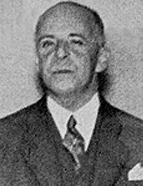

Even before his initial works in historiography, Gastão de Mello de Mattos was fervently active in support of the regime deposed on 5 October 1910. This led to his alleged indirect involvement in the military conspiracy that culminated in the “Bloody Night” on 19 October 1921, when radical sailors and arsenal workers committed crimes resulting in the massacre and death of key Republican figures, including Prime Minister António Granjo, Lieutenant Freitas da Silva, as well as Machado dos Santos and Carlos da Maia — the two most prominent architects of the implantation of the Republic in Portugal (R. Brandão, A Noite Sangrenta... [The Bloody Night...], 1991, p. 19). Berta da Maia, widow of Carlos da Maia, undertook an exhaustive personal investigation to uncover those responsible for this crime. She published her findings in a memoir, which included confessions from the primary suspect, Abel Olímpio, known as "the Golden Tooth". Indeed, it was Olímpio who suggested a potential connection between the events of the night of 19 October and the Monsanto revolt, known as the Monarchy of the North (1919) — which stemmed from the desire of certain individuals to avenge the death of King Carlos — by providing the names of several monarchists who took part in the conspiracy, including Gastão de Mello de Mattos (B. Maia, As minhas entrevistas... [My interviews...], 1928, p. 25). Questioned on 4 November 1926 at the Criminal Investigation Department, Mattos’s report includes a statement in which he admits to having been part of the leadership of "a revolutionary organisation of a conservative and nationalist nature," whose ultimate goal was the restoration of monarchical rule in Portugal (Idem, ibidem). However, the case brought against him by the Direcção de Justiça e Disciplina [Directorate for Justice and Disciplinary Action], which led to his dismissal from the army in 1919, alleges that Gastão de Mello de Mattos had declared to the deputy chief and chief of staff at the 5th Division headquarters — where only republican officers were supposed to serve — that "he was a monarchist and that he should leave, this happened during the monarchist insurrection in northern Portugal in 1919". He appealed this accusation, at least until 1938, asserting that he had never made statements linking him to "any revolutionary movement or support for its leaders" (Processo Político... [Political Case...], Military Historical Archive, Direcção de Justiça e Disciplina . Thus, we are confronted with two contradictory testimonies, though Mattos's connection to the monarchist uprising in Monsanto appears indisputable. Mattos, however, ended up cooperating by revealing some of the names of those responsible for payments made to the sailors involved in the events of the "Bloody Night", even suggesting the involvement of Spanish monarchist politicians. However, according to Berta Maia, none of the individuals he named were questioned following this confession (R. Brandão, A Noite Sangrenta..., 1991, p. 217).
This work is financed by national funds through FCT - Foundation for Science and Technology, I.P, in the scope of the projects UIDB/04311/2020 and UIDP/04311/2020.
